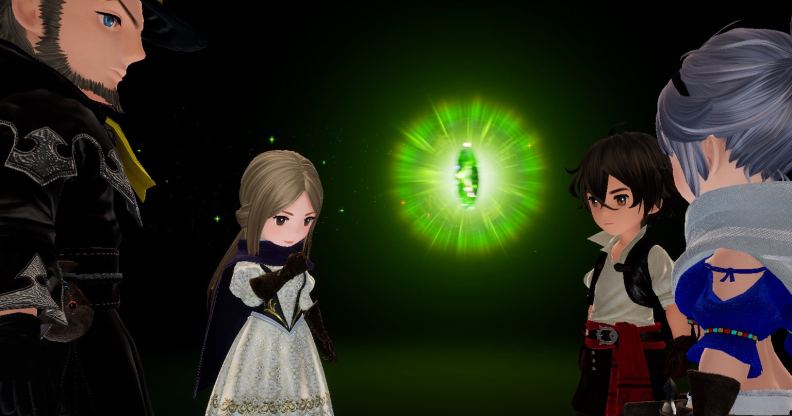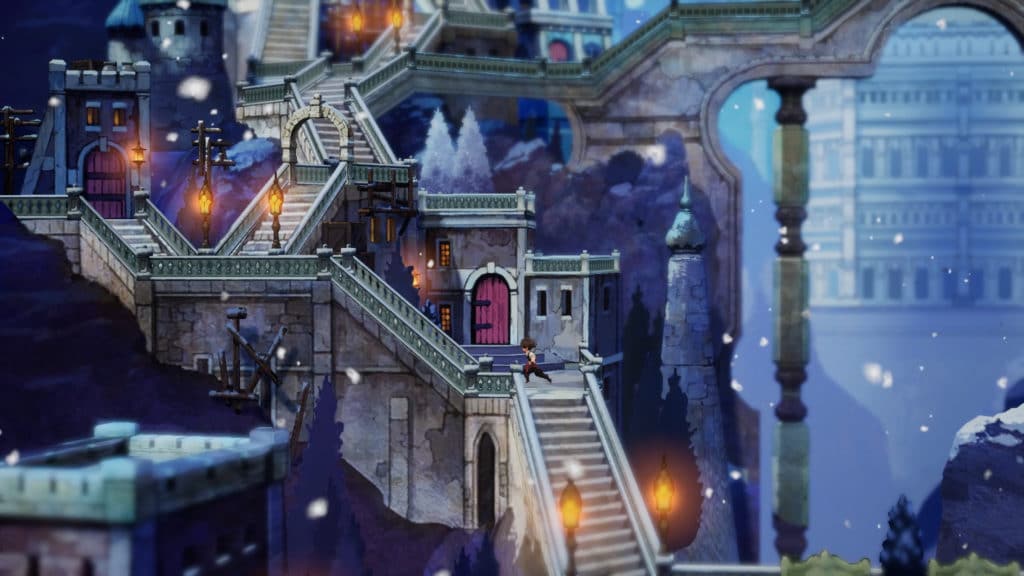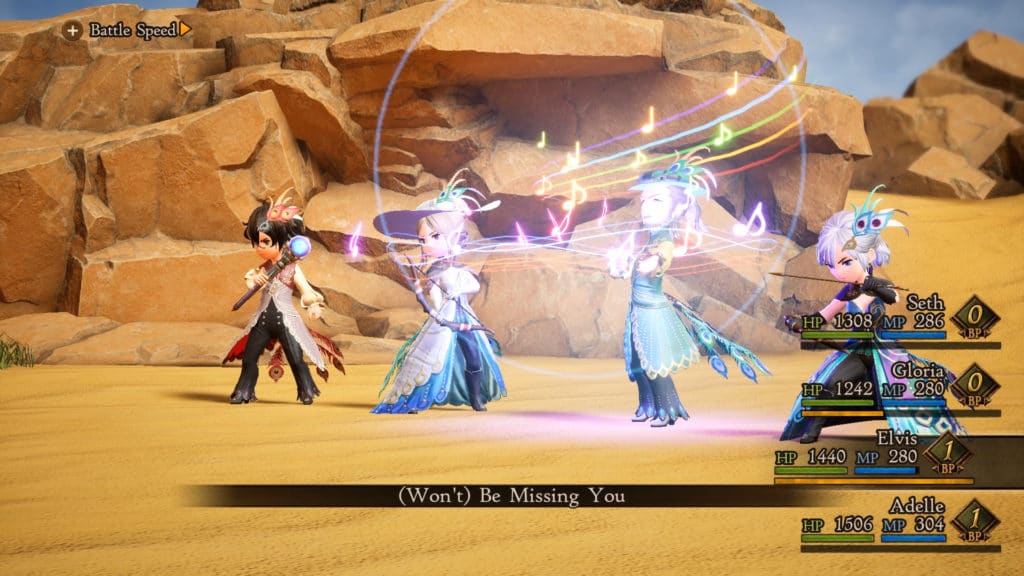Bravely Default II Nintendo Switch review: full of nostalgic charm, but too polite

Bravely Default II. (Nintendo)
JRPGs are known for their epic storylines, innovative battle systems, and spiky-haired heroes.
As a throwback, Bravely Default II on the Nintendo Switch mostly sticks to these same conventions with a few modern conveniences, but in safely aping games of the past it ends up feeling too polite.
Despite being named Bravely Default II, this is actually the third game in the series following Nintendo DS release Bravely Default and its direct sequel Bravely Second. Don’t be confused though; this new game is totally separate from the first with its own story, but similar visuals and gameplay.
Just like the DS game, this new Switch release features 3D characters on hand-painted backdrops. At times the game looks like a stunning storybook with its colourful cities all artfully detailed. There’s also something cute about the mini characters skittering about the environments.
However, the style was clearly designed for the DS system: playing in handheld mode confines those details and fussy menus, while on the big screen it can feel bland. Character designs lack personality and for the most part cut scenes are reduced to puppet-like models acting in front of a backdrop.

Bravely Default II. (Nintendo)
The game as a whole is indebted to the Final Fantasy series, from its crystal-based story right through to the spell names and the job system. It’s even got its own card game side quest inspired by Triple Triad. This is fair enough given the series itself began as a Final Fantasy spin-off, but it lacks the iconic characters and unforgettable stories the series is known for.
Instead, we have a simple plot of elemental crystals that must be collected to save the world from catastrophic calamities. Our group of four heroes – the Heroes of Light no less – travel from town to town delving into dungeons, helping the locals, and unlocking the magical powers of Asterisks that allow each character to take on new jobs, or roles, in the battle system.
Verily, the script doth be old fashioned
It’s a plot full of obvious tropes with stereotypical characters. There’s the forlorn princess whose kingdom has crumbled; the washed up hero who arrives on a shipwreck; and a Scotsman who’s always keen for a drink in the tavern. There’s little character development over the course of the story and the voice acting is something of a world tour of dodgy accents as, verily, the script doth be old fashioned.
Together with the inconsistent designs, the cast lacks cohesion.
The game is also a slave to the past in its gameplay, but it’s here that it really succeeds. As with its predecessor, it relies on the central conceit of the turn-based battle. The Default command is a clever spin on defending, allowing you to store up Brave Points (BP) that can then be spent on extra moves in subsequent turns with the Brave command. It’s possible to overuse BP and reach a deficit that must be recouped through turns of inaction, adding a fun risk/reward element to the battles. Watching your strategies pay off is hugely satisfying.
On top of this is the job system where each character can take on a main and sub role – mages, thieves, bards, warriors and more. Each job levels up separately for each character, so it’s possible to mix and match abilities to customise your party with plenty of depth. It’ll take plenty of work to get there, but there’s enjoyment in experimenting with different possibilities and as each enemy type has various weaknesses to exploit you’ll need to play around.

Bravely Default II. (Nintendo)
That said, this game is a grind-lover’s dream. With so many battles in the extra long dungeons and tonnes of abilities to unlock, endless battles are seemingly the only way to get past the bosses. Even on casual difficulty, the end of level enemies are brick walls that can take hours to overcome. Despite the fun battle system, the game can feel like a slog to push through.
This is partially alleviated by a fun little boat exploration extra. Given to you early on, you can send a boat off to explore, which continues doing its thing in the background even when you’re not playing the game. In return you’ll receive orbs to level up both your characters and their jobs – meaning that sometimes leaving the game alone for a while can pay off.
Of course, for fans of old school JRPGs, grinding is all part of the experience and there is plenty of nostalgic charm to Bravely Default II. The plot and characters might be shallow, but what the game lacks in grandeur and epic adventure it makes up for with a clever battle system with surprising depth. Bravely Default II is hard to recommend to casual RPG gamers, but hardcore players will be right at home.
3/5
The game is available to download from Amazon or physical copy from Currys PC World.
This article contains affiliate links, PinkNews may earn revenue if you click through and purchase products through the links.

